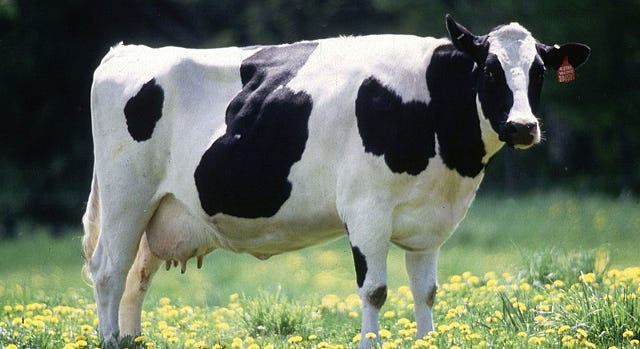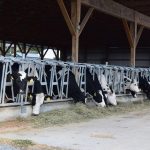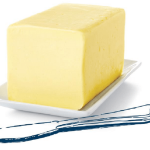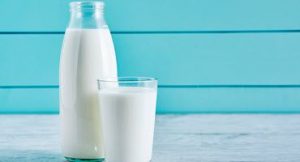
“We’re producing more milk, we’re having less greenhouse gas emissions overall, which means that the U.S. dairy sector is already the most efficient in the world,” said Jonker, who also serves as chairman of the International Dairy Federation’s Science Program Coordinating Committee.
Still, farmers face regulatory and financial challenges in their efforts to reduce greenhouse gas emissions and increase the sustainability of their resource use, he said.
“The biggest challenge is really the technology and financial side. If we’re not able to have our dairy farmers afford to make changes in their operations, then they cannot put these technologies and best practices into practice on their farms.”
During the Dairy Defined podcast, Jonka addressed the ever growing global conversation of sustainability as it relates to dairy and animal agriculture and the call for policy pressure to create solutions around climate change.
Jonker currently leads efforts on animal health and welfare, animal biotechnology, dairy farm biosecurity, dairy farm air and water quality, sustainability, and technical service issues.
Following February’s unusual weather reaching down as far as Texas, many conversations turned to climate change, inevitably bringing production agriculture and dairy into the picture. Jonker says there tends to be perceived and actual impacts of dairy production on climate change.
“There are the potential impacts and challenges that climate change can bring to dairy production and there are opportunities for dairy to help address climate change. And those are the three spheres of conversations that I’m hearing today,” Jonker said.
Many threads of conversation tend to link climate and sustainability together, he said.
“Climate change gets wrapped up in sustainability specifically about greenhouse gas emissions and global warming. …greenhouse gas emissions is a place where some activists try to claim that dairy production and livestock production in general, to be unsustainable,” he said.
Unfortunately when this chatter turns to climate sustainability, the future of the planet – many tend to point their finger at dairy and animal agriculture as a whole.
Jonker says there’s a number of facts that these activist groups get wrong or misrepresent.
But in a world on track to reach 10 billion citizens by 2050, as the economic circumstances of those living in developing countries increase, Jonker says the desire to consume more animal products grows.
“Milk and dairy products are a source of significant essential nutrients for people. Let’s just face it, milk itself is nature’s most perfect food and there’s a reason why people want to have more dairy products and that’s part of it,” he said.
Dairy’s emissions role
According to the Food and Agriculture Organization of the United Nations, North America as a continent which is dominated by the U.S. for the dairy industry, is the only region in the world where absolute greenhouse gas emissions have decreased from the year 2005 to the year 2015.
Jonker pointed out that emissions attributed to the dairy sector have decreased by 5%, even with milk production increasing on average about 2.1% per year during that same time period.
“We’re producing more milk, we’re having less greenhouse gas emissions overall, which means that the U.S. dairy sector is already the most efficient in the world,” Jonker said.
U.S. leading the way
When asked why the U.S. able to get these results when other parts of the world with the same goals and concerns aren’t able to do so, Jonker pointed to innovation in the industry.
“One of the reasons we have the results that we have being leaders in the world is that we’ve been leaders in innovation in dairy farm production for decades. When you look at the way that our farming systems have adjusted to producing dairy in all 50 States and Puerto Rico, you can imagine that we have a very diversified dairy industry,” he said. “We’ve got 34,000 dairy farms in the U.S. from five cow Amish farms that milk by hand to dairy farms with 10,000 cows that are practically vertically integrated industries.”
Across the U.S. known for diverse climates, Jonker said the industry has adapted to those production realities.
“And because of that ingenuity, it’s allowed us to become the most efficient dairy producers in the world,” he said.
Jonker says that no matter the size of the dairy operation, each farm can embrace opportunities like minimum to no till, intensive grazing or methane digesters to help the U.S. dairy industry reach its goal of becoming carbon neutral by 2050.
“And these (practices and technology) can be utilized in other parts of the world, from developing countries to the most developed countries in the world,” he said.
Farm environmental stewardship
In order for farms to meet environmental goals, each operation should evaluate its greenhouse gas intensity and energy use. Jonker says there is a variety of ways farmers can do to improving feeding of animals, working on feed storage, alternative cropping systems, or how manure is stored and nutrients managed to adopting technology such as methane digesters.
“In order to be able to get to a net zero, or better by 2050 for the U.S. dairy industry, there does need to be improvements in technology. And frankly, some financial opportunities for farmers to be able to recoup the costs of becoming carbon neutral,” Jonker said. “Some of these things good at reducing carbon emissions…cost money. And in order to be able to capitalize those costs, we need to have opportunities for dairy farmers to have things like additional assistance through U.S. government programs like Farm Bill conservation programs.”
Other considerations include voluntary markets for carbon training, water quality trading would allow dairy farmers to capture the good work that they’re doing that has a cost to it.
“At minimum, we’d like to have this become revenue neutral for dairy farmers but really the goal is to have these enhancements in that best practices and technologies that move dairy farmers to carbon neutrality, to become a source of revenue for dairy farmers, helping to capture the good things that they’re doing as part of the environmental solution,” he said.
While Jonker believes this is achievable, a roadmap need to be laid out to help farmers get there. Last year, the U.S. dairy industry started an initiative called the Net Zero Initiative.
“Is that roadmap and how do we get the dairy industry in the U.S. to carbon neutrality by 2050?” he said. “There are changes that need to come through legislative processes and changes in how programs are done at places like USDA.”
But even innovative technology may be fettered by regulatory hurdles. Jonker alluded to approval for new innovative feed additives with the potential to reduce enteric methane (cow burps) by up to 30%.
“If those technologies prove efficacious, that is going to be a great part of the story to getting to carbon neutrality,” Jonker said. “But there also has to be a pathway for approval of these products by the FDA so that we know that they’re safe and efficacious but also that they can pass through a regulatory hurdle.”
Jonker said other competitor countries with less arduous approval channels have already approved similar products for use.
Jonker says that in order for dairy farmers to make inroads into meeting those goals, the technology must be affordable.
“We need to be able to provide those tools to the dairy farmers to make these technologies and practices affordable for them,” Jonker said.























